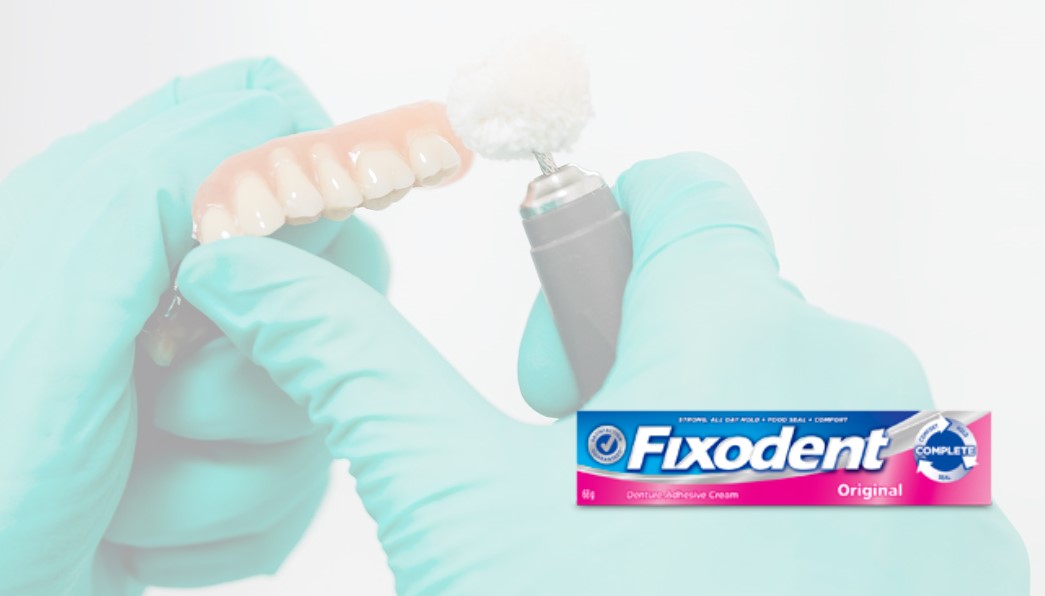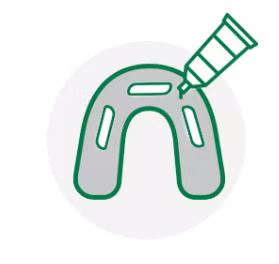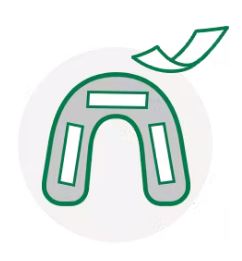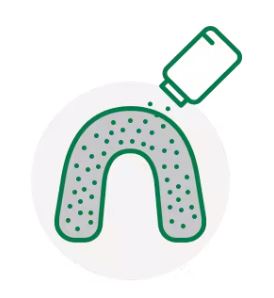If you have a denture installation, you probably won’t be able to do without denture adhesives. Denture adhesives help keep your denture in place so you can enjoy a flawless smile. Also, you can maintain a comfortable eating and talking experience when your denture is well-secured.
However, after the first installation, many denture wearers rely solely on over-the-counter adhesives to continually keep their dentures in place. Often, without professional help or instruction, they tend to apply dental adhesives incorrectly to their dentures. Typically, a tube of denture adhesive should last between seven and eight weeks.
When denture adhesives are misused, aside from the financial implications, misusing denture adhesives could also have serious health consequences. To help you stay clear of these implications, here are a few tips on using denture adhesives.
All medical content on this site, including this guide and other product reviews, is written by our team of experienced writers and researchers. All writers from The Toothbrush Expert are recommended and reviewed in the industry. You support us through our editorially chosen links, which earn us commission. Learn more
All of our picks have the American Dental Association (ADA) Seal of Acceptance.
Learning about dentures adhesives
If you have relied on denture adhesives for a while, there’s probably a lot to learn. When newly installed by a professional, dentures are made to fit and sit, probably on a supporting structure in the mouth. Dentures may be implant-supported or removable.
However, when made removable, the wearer might need adhesive products to keep it in place to prevent incidents of it slipping off when talking or eating. Denture adhesives are known to change the facial structure or cause a shift in the jaw shape. This may loosen the grip of the denture, and ill-fitting dentures may result in further damage to the remaining teeth structure in a wearer’s mouth or cause sore spots to appear on the gum line.
When this happens, the first step is to seek professional help to recommend either a good denture adhesive product that may bring some relief or perhaps have the denture relined so that it becomes fit again.
How denture adhesives work
Ofcourse, Denture adhesives are common in various forms:
The application of these types of denture adhesives may vary, but the end goal of securing the denture in place remains the same. However, it is important to seek a professional recommendation on the type that may suit you the most.
How does Denture adhesive cream work
Denture adhesive cream or gel is the easiest and most common among the many types of denture adhesives. Wearers would often spread a peanut size throughout the denture before wearing it. This will maintain the necessary grip and suction needed for constant oral activities. On the other hand, denture adhesive powder requires that you form a usable paste by mixing the powder content with a little water.
- Clean your dentures using Cleanser Tablets. Dry them afterwards.
- Apply adhesive in short strips, not too close to the partials edges. Avoid applying too much, or oozing may occur.
- Rinse your mouth before inserting the dentures.
- Press denture into place and bite down for a few seconds to secure hold.
How do Denture adhesive strips work
Denture adhesive strips or bad are trimmed to fit into the denture. The sticker part of the trimmed strips goes into the denture and is then moistened to give a firm grip against the gum and the jawline. Once you have the desired suction and grip, your denture is good to use. When using adhesive strips, you may not exactly have issues with the desired quantity of adhesive to use.
- Clean your dentures with denture cleaning tablets and dry them afterwards.
- With dry hands, peel open and remove strips.
- Lightly moisten one strip at a time with water.
- Place strips as shown, not too close to the denture edges. Do not overlap strips.
- Rinse your mouth with water before inserting the denture.
- Press dentures into place and bite down for a few seconds to secure hold.
How does Denture adhesive powder work
Each strip already has the standard amount of adhesive needed to keep the denture intact. For the other form denture adhesive powder, most manufacturers will include users’ guides on the correct application of the adhesive product on your denture. We made in overview for you to make it easier.
- Clean denture with denture cleaner tablets.
- Spray powder very lightly and evenly onto denture surfaces coming into contact with gums or roof of mouth.
- Rinse your mouth before inserting the dentures.
- Thoroughly shake off any excess powder.
- Press dentures into place and bite down for a few seconds to secure hold.
Also, regardless of the adhesive you have chosen, always ensure you rinse your mouth before applying the adhesive.
How much denture adhesive to use
The overriding purpose of a denture adhesive is to hold the denture in place. Therefore, it wouldn’t matter whether you were applying just a peanut size or a large quantity of the adhesive. What is important is for the glue to do its job. Therefore, please stay away from applying excessive denture adhesive, and it is excessive as soon as a remnant of the adhesive begins to ooze out of the denture after application.
Many products recommend that only 1 to 1.5 grams of denture adhesive cream or gel be used per application. When using strips, only 8 to 10 cm of wide adhesive stripes should be considered for use. This allows the body to not absorb too much of any active ingredient capable of being toxic.
Additionally, it is important to avoid swallowing any amount of adhesive to avoid digestion issues. After each application, you may wait for about five to ten minutes before commencing any eating or drinking activities.
Furthermore, denture wearers need to clear out the adhesive before sleeping. Every single application of denture adhesive is only meant to last for a day. Cleaning off the adhesives also helps you get rid of food particles that might have been trapped on the adhesive, which, if left unremoved, may result in gum infection and bacteria growth.
Removing Denture Adhesives
Removing adhesives from your gum and the denture itself is a simple process. To dissolve all the adhesives, you have to fill your mouth with warm water or mouthwash and then swish for some thirty seconds to one minute. Because of the possibility that some adhesives might remain disintegrated, you may use a soft-bristled toothbrush to give your gums and tongue a good wash.
Always remember not to swallow the content after swishing. Cleaning your denture, is next. Run warm water over the denture to dissolve any adhesive remnants. You may also use the same toothbrush used for your mouth to clean up the denture and dislodge any hidden bacteria or food particles.
Conclusion
Denture wearers need to understand that wearing dentures does not compensate for other serious dental deficiencies. Rather than relying on dentures or extra-strength denture adhesives to achieve a flawless dental appearance, consult a professional to explore other dental restoration options.
It is equally very important that you settle for zinc-free dental adhesive products. Recently, many health challenges have been associated with zinc-based dental adhesives. When used excessively, zinc may cause numbness, paralysis, and digestive system dysfunction, amongst other serious health issues. Furthermore, always ensure only fitting dentures to avoid using adhesives beyond the recommended quantity. Nothing is more appealing than a face with a perfect set of teeth. Although dentures could be one of the easiest and cheapest forms of dental restoration, following recommended application standards and use will help keep wearers away from complicated health issues.

Dr Michael Jones is the proud founder of The Toothbrush Expert. He has been working as a dentist for 21 years now. Besides his work as a dentist, Michael wants to help people to find the right dental products. His goal is to provide everyone with honest expert reviews on all kinds of dental care products.




